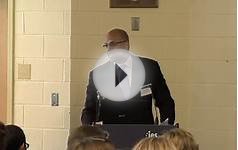 There is a somewhat common argument in education circles that the focus on math and reading tests in No Child Left Behind has had the unintended consequence of generating a concurrent deemphasis on other subjects. This includes science and history, of course, but among the most frequently-mentioned presumed victims of this trend are art and music.
There is a somewhat common argument in education circles that the focus on math and reading tests in No Child Left Behind has had the unintended consequence of generating a concurrent deemphasis on other subjects. This includes science and history, of course, but among the most frequently-mentioned presumed victims of this trend are art and music.
A new report by the National Center for Education Statistics (NCES) presents some basic data on the availability of arts instruction in U.S. public schools between 1999 and 2010.
The results provide only very mixed support for the hypothesis that these programs are less available now than they were prior to the implementation of NCLB.
Overall, as shown in the graph below, between 1999-00 and 2009-10, there wasn’t much of a decline in the proportion of elementary schools reporting that instruction was specifically available in music (94 percent in both years) and visual arts (a minor decrease from 87 to 83 percent). Most elementary schools provide instruction in these two “core” arts subjects. It is of course possible that music and visual arts instruction, though still available in the vast majority of schools, are less available – e.g., they represent a smaller share of total instruction - but the data suggest otherwise. For example, virtually all schools offering music and visual arts instruction in both years reported instruction at least once a week and throughout the entire school year.

There was, on the other hand, a rather marked decrease in the proportion of elementary schools reporting that instruction was available in dance (decrease from 20 percent in 1999-00 to 3 percent in 2009-10) and drama (a similar decline from 20 to 4 percent). The degree to which these declines are due to NCLB-related factors cannot be examined using these data.
Moving on to secondary schools, the NCES data suggest even less change overall in the proportion of schools offering various arts programs. In the second figure, below, we see that availability is relatively stable for music and declining very slightly in the case of visual arts (the comparison year for secondary schools was 2008-09). In addition, unlike elementary schools, the proportion of schools reporting that drama and dance were taught remained relatively stable between 1999-00 and 2008-09.
(One additional result not shown in the graph: The percentage of secondary schools reporting that coursework in the arts was a requirement for graduation increased from 52 percent in 1999-00 to 57 percent in 2008-09.)
There was, on the other hand, at least one noteworthy trend (also not shown in the graph) underlying these aggregate figures for secondary schools.
Specifically, while the proportion of these schools reporting that music instruction was available increased slightly among schools with fewer than 76 percent of students eligible for free/reduced-price lunch, it decreased rather substantially (from 100 to 81 percent) among schools with 76 percent of eligible students or higher.









